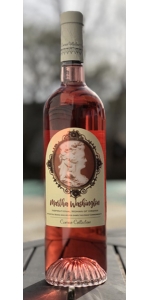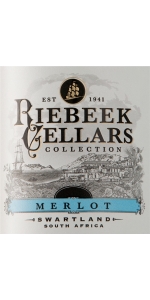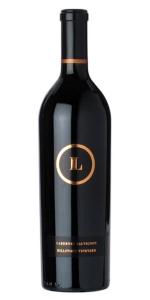Breitenbach Cellars Merlot Ohio USA
| Country: | United States |
| Vintage: | NV |
| Bottle Size: | 750 ml |
Vintage Unknown
All older vintage wines have been purchased from a single collectors cellar. Pictures can be requested before shipment.
Pearmund Cellars Ameritage Red is made from 33% Cabernet Sauvignon, 30% Merlot, 17% Malbec, 10% Cabernet Franc, 10% Petit Verdot.
Cherry, currant, and herbaceous flavors. Balanced tannins with a lingering finish. Full-bodied and complex. Limited production.
In 2019, Chris Pearmund worked with sixteen Virginia wineries to create a blended wine with grapes from each participating vineyard to commemorate the 400th Anniversary of Winemaking in Virginia. A portion of the wine’s proceeds were donated to museums and events that would contribute to tourism in the Commonwealth and foster a broader understanding of Virginia’s cultures and cuisines. This idea sparked another movement to celebrate through wine, and Cameo seemed a perfect way to commemorate the milestone moment in history.
Cameo Wine Collection was created to highlight women in Virginia, and the memorable events that have unfolded in the Commonwealth that lead to the movement to secure women’s right to vote. Raise a glass and toast the 100th Anniversary of the 19th Amendment. Cameo Rosé honors 12 of Virginia’s most influential women. Each bottle has a label depicting one of the chosen women, who’s contributions range from historic, business, entertainment, politics, and wine. The story of the suffrage movement in Virginia is an important part of the collective history. A variety of cultures and eras have been curated to share recollections of the fearless, passionate ways each woman lived so that a case of wine will contain twelve different individuals to celebrate. Women like Martha Washington, Pearl Bailey, and Ella Fitzgerald.
Cameo Rosé offers aromas of raspberry, strawberry, and peach. Dry on the palate, silky tannins and minerality are balanced by strawberry and orange zest flavors.
Riebeek Cellars Merlot is made from 100% Merlot.
Grapes were cold soaked overnight. Inoculated with selective yeast. Fermentation took place at 24 - 26 degree Celsius. Wine were pressed at
above 2 degree Balling. Malolactic fermentation finished in stainless steel tanks. Oak maturation include French oak chips, French oak staves and 2nd and 3rd fill barrels. All blended together to perfection.
The style is elegant with distinctive red berries and well-integrated wood flavors on the nose. The pallet is velvety and smooth with an aftertaste that lingers with the juicy flavors of abundant berries.
At room temperature or slightly chilled. Enjoy with pasta or light meat dishes.
Riebeek Cellars Merlot is made from 100% Merlot.
Grapes were cold soaked overnight. Inoculated with selective yeast. Fermentation took place at 24 - 26 degree Celsius. Wine were pressed at
above 2 degree Balling. Malolactic fermentation finished in stainless steel tanks. Oak maturation include French oak chips, French oak staves and 2nd and 3rd fill barrels. All blended together to perfection.
The style is elegant with distinctive red berries and well-integrated wood flavors on the nose. The pallet is velvety and smooth with an aftertaste that lingers with the juicy flavors of abundant berries.
At room temperature or slightly chilled. Enjoy with pasta or light meat dishes.
Realm Cellars Bard Red Blend is made from a blend of 83% Cabernet Sauvignon, 7% Merlot, 6% Cabernet Franc, 3% Petit Verdot, 1% Petite Sirah.
The 2021 is the largest and most complex blend we've ever made with dozens of components from vineyards across the realm of Napa Valley. This vintage includes new vineyard sources from Calistoga, Rutherford and Oak Knoll AVA, allowing us to broaden our painter’s palette. The Bard is generally more approachable in its youth than some of our single vineyard bottlings, but we expect it to age for many years to come. This is our first time using a technical cork for this wine, which should guarantee consistency and improve longevity.
Blend: 83% Cabernet Sauvignon, 7% Merlot, 6% Cabernet Franc, 3% Petit Verdot, 1% Petite Sirah.
Review:
Lastly, the 2021 The Bard checks in as 83% Cabernet Sauvignon, 7% Merlot, 6% Cabernet Franc, and the rest Petit Verdot and Petite Sirah. This beauty has a killer bouquet of cassis, spring flowers, graphite, chalky minerality, and violets. This carries to a full-bodied, seamless, silky, flawlessly balanced effort revealing fine tannins, a good sense of freshness, and a thrilling finish.
-Jeb Dunnuck 98 Points
High gloss metallic paint with a forged iron big-block under the hood - our 2018 Hillstone Vineyard is a real show car. Deeply fruited with hi-tone huckleberry from a prime hillside site in Rutherford, the wine has a thick powerband with crushed stone and coffee bean, retaining polish and precision straight through the tail pipes.
Review:
Lots of pure cassis and blueberry- like fruits as well as licorice, graphite, and crushed rock-like minerality, emerge from the 2018 Cabernet Sauvignon Hillstone Vineyard. It's a full-bodied, opulent, powerful Cabernet Sauvignon that doesn't pull any punches on the fruit or texture scale, yet has ripe, present tannins, a light, elegant texture, and a great finish. Give bottles an hour in a decanter if drinking any time soon, or better yet, hide bottles for 2-3 years. It's going to evolve for 15+ years in cold cellars.
-Jeb Dunnuck 95 Points
- back
All older vintage wines have been purchased from a single collectors cellar. Pictures can be requested before shipment.
Clos Saint-Jean is a 41-hectare estate in Châteauneuf-du-Pape run by brothers Vincent and Pascal Maurel. Considered by many critics and wine-writers as the preeminent estate espousing the modern style of winemaking in Châteauneuf, this cellar is one of the oldest in the region, having been founded in 1900 by the greatgreat-grandfather of Vincent and Pascal, Edmund Tacussel. A short time after its founding and well before the AOP of Chateauneuf-du-Pape was created in 1923, Edmund began bottling estate wines in 1910.
The farming at Clos Saint-Jean is fully sustainable due to the warm and dry climate, which prevents the need for chemical inputs. Instead, Vincent and Pascal employ organic methods for pest control, mainly pheromones, to prevent pests from taking up residence in their vines, a process called amusingly enough in French, confusion sexuelle. The vines tended manually, and harvest is conducted in several passes entirely by hand.
Deus ex Machina is a literary and dramatic term for a miraculous intervention that interrupts a logical course of events in a plot or play. A suitable name for a cuvée that had it’s start in the torrid vintage of 2003 when Philippe Cambie and Vincent Maurel made the decision to harvest at the end of September, weeks after their neighbors. Deus ex Machina is a blend of old vine Grenache from La Crau, aged in tank with equally ancient Mourvedre from the sandy soils of BoisDauphin aged in demi-muid. Deus ex Machina is only made in the best vintages.
Review:
Lastly, the 2022 Châteauneuf Du Pape Deus-Ex Machina shows a similar profile to the Combes des Fous, yet it brings another level of tannins and concentration. Kirsch liqueur, white flowers, sandalwood, cured meats, and graphite notes all shine here, and it's full-bodied, has a deep, layered, powerful, yet weightless profile, lots of ripe tannins, and a blockbuster of a finish. This ripe, sexy, seamless, incredibly impressive beauty will compete with anything in the vintage. As usual, this cuvée is 60% Grenache and 40% Mourvedre, which is brought up in roughly 40% new demi-muids.
Review: Jeb Dunnuck 97 Points











